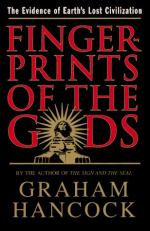|
This section contains 263 words (approx. 1 page at 400 words per page) |

|
Conclusion: Where's the Body? Summary and Analysis
Chapter 50, "Not a Needle in a Haystack" tells about Hancock's researcher who resigns just after starting when he concludes there is no lost civilization because a landmass large enough to support one is too big to lose. No unmapped oceans with a lost continent sunk in their depths have the necessary supporting terrain, resources and economy. Hancock assumes a cataclysmic catastrophe, like the last Ice Age meltdown between 15,000 and 8000 BC may be the missing piece when he receives an outline about Antarctica that fits Charles Hapgood's "earth-crust displacement' theory. Chapter 51, "The Hammer and the Pendulum" describes earth-crust displacement theory on the earth's continents. Chart on page 472 shows South Pole and Antarctica locations in 15,000 BC before displacement. When the crust shifts the large Antarctic landmass that sustains an ancient civilization is displaced to center around the...
(read more from the Conclusion: Where's the Body? Summary)
|
This section contains 263 words (approx. 1 page at 400 words per page) |

|




